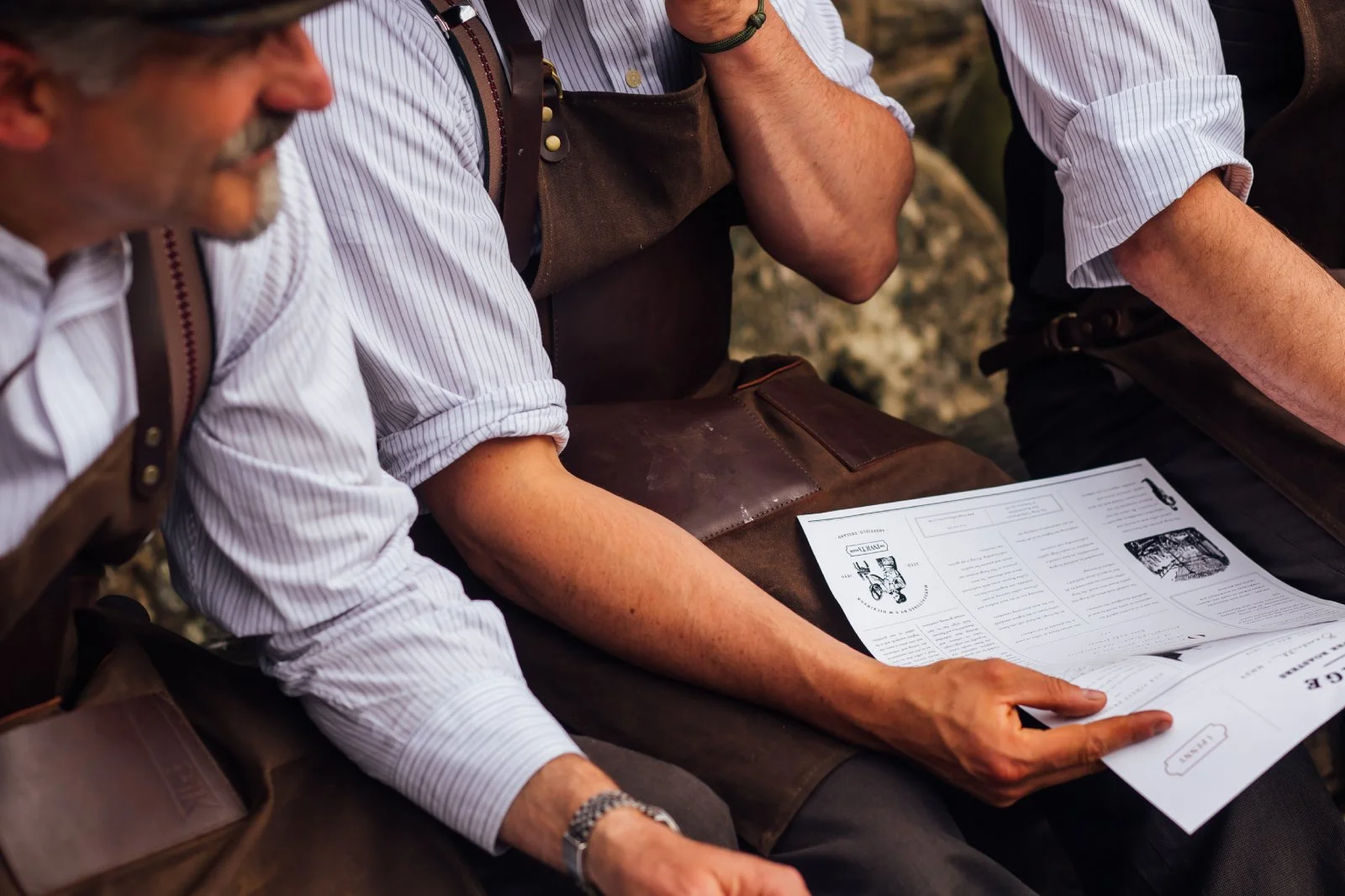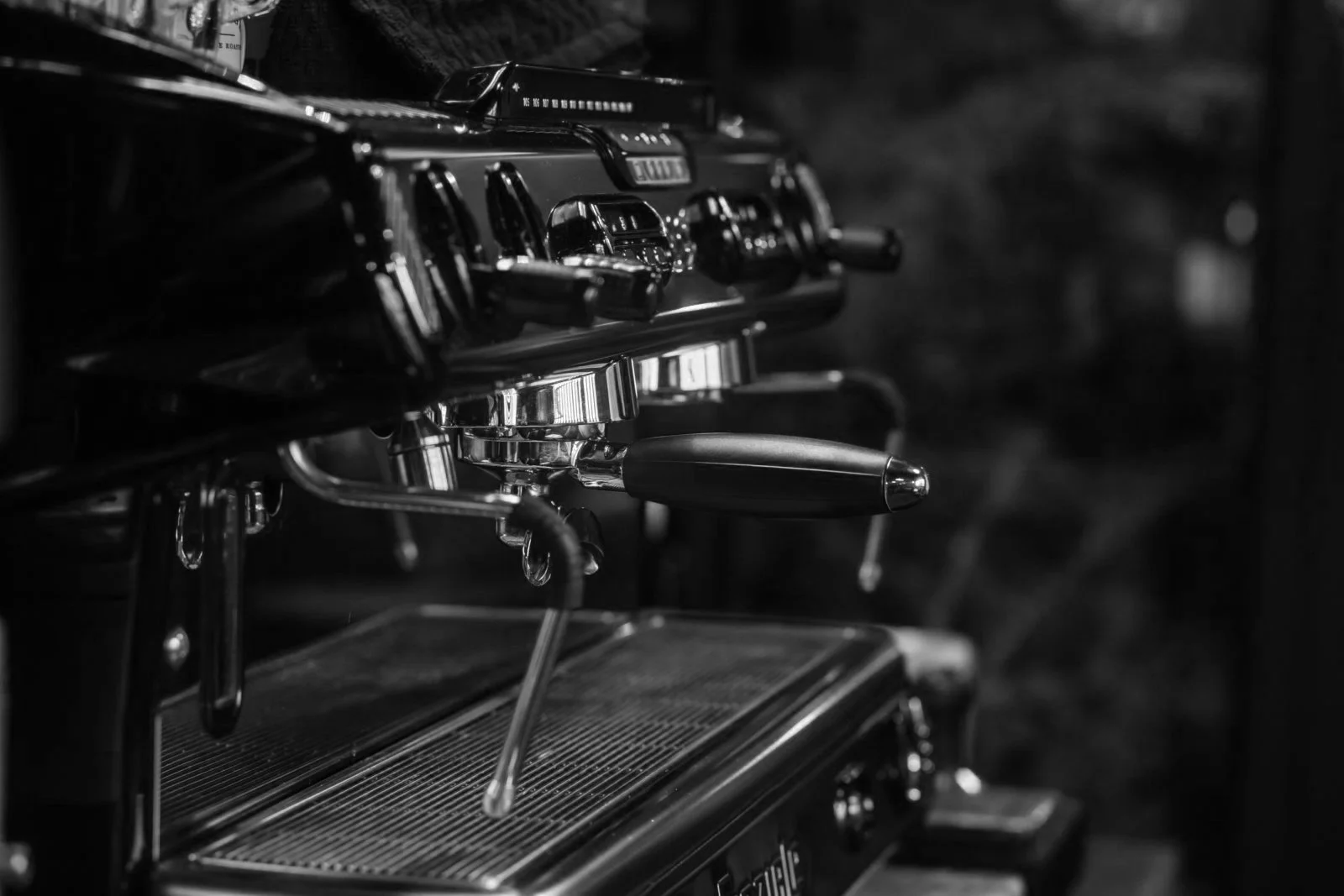
…
“Our coffee is handcrafted in Sheffield,
England’s “City of Steel”, which men of
foresight, diligence and enterprise have made
famous.”
_
THE FORGE
Brew Guides
_
How To Make An Espresso.
I. Prepare
Turn on your machine and give it plenty of time to heat up. Depending on the size of your machine, this could take anywhere from 15 to 45 minutes. Don’t assume that you’re ready to go as soon as you’re up to brewing temperature, wait a bit little longer until the entire machine feels nice and warm.
Lock an empty portafilter in the grouphead and run the machine for a few seconds. This brings fresh water to the front and heats up the parts that get closest to your coffee. Then, wipe off the inside of the portafilter and the underside of the grouphead so that they’re clean and dry.
...
II. GRIND
Before brewing, coffee beans
need to be cut into smaller
pieces. Making espresso requires
a finer grind than most methods,
with particles around the size of table
salt. you know you’re in the right
neighbourhood once the ground
coffee beings to clump together.
Grind a few beans to check for
appropriate fineness and purge
your grinder of stale grounds.
The coffee should clump loosely
and appear powdery, but should
still feel gritty when rubbed
between your fingers.
III. DOSE
16 to 20 grams of freshly ground coffee into the portafilter. As coffee exits the chute, move the portafilter so that the grounds settle evenly in the basket.
Afterwards, use your forefinger to level the grounds and fill in any air pockets. The larger the coffee dose, your shot will increase in both body and intensity. Feel free to adjust your dose according to taste.
...
IV.
TAMP
With your wrist, arm and elbow positioned
directly over the centre of the portafilter
basket, focus on pressing evenly, using
your fingertips to feel the edge of the
basket. Inspect the dry puck to be sure the
bed appears level.
Compacting ground coffee with a tamper
restricts the flow of water, forcing coffee
and water to interact. This process creates
an emulsification of solubles and oil as the
water passes through producing a ‘crema’.
Start with a 30-pound press (your
bathroom scale can tell you what this feels
like), applied evenly. A firm, level tamp is
essential to even extraction.
...
V. WIPE
Remove excess grounds from the rim
of the handle with a dry finger. This
will ensure you don’t have any coffee
grounds build up on the tubber seal in
the grouphead. Over time this build up
will cause grounds to leak into the
espresso you are preparing.
VI. PURGE
At this point it is healthy practise to
purge a short amount of water from
the grouphead, ensuring fresh water is
used and correct temperature is
maintained.
III. EXTRACT
Return the portafilter to the grouphead and begin brewing. If your machine offers a separate pre-brew or”Pre-infusion” stage, complete this first.
By doing so, you’ll allow stored gases to release before full infusion begins. With fresh coffee, pre-infuse until you see the first drops exit the portafilter.
...
VIII. YIELD
With brewed coffee, we measure coffee
input and water input, but when
making espresso it’s coffee input and
beverage output. Depending on your
dose and basket size, aim for about 2
ounces of espresso out, enough to fill a
large shot glass. If you’re weighing your
shots, a 30-gram yield is a safe place to start
IX. TIME
With our recommended dose and yield,
about 25-30 seconds should pass between
the beginning of extraction and the moment
your glass is full. A shorter time means
your coffee is ground to course and longer
time means it is ground too fine.
X. TEMPERATURE
Water heated between 90 to 96’c is ideall for preparing coffee. For some machines, this is made possible by a”PID controller”. If your machine has once, you can lay within this range to find what you like.
You’ll notice that lower temperatures draw out more brightness, while higher temperatures produce more roasted flavours. If you’re not able to choose the temperature for yourself, you can assume for now that the machine is doing its job.
...







